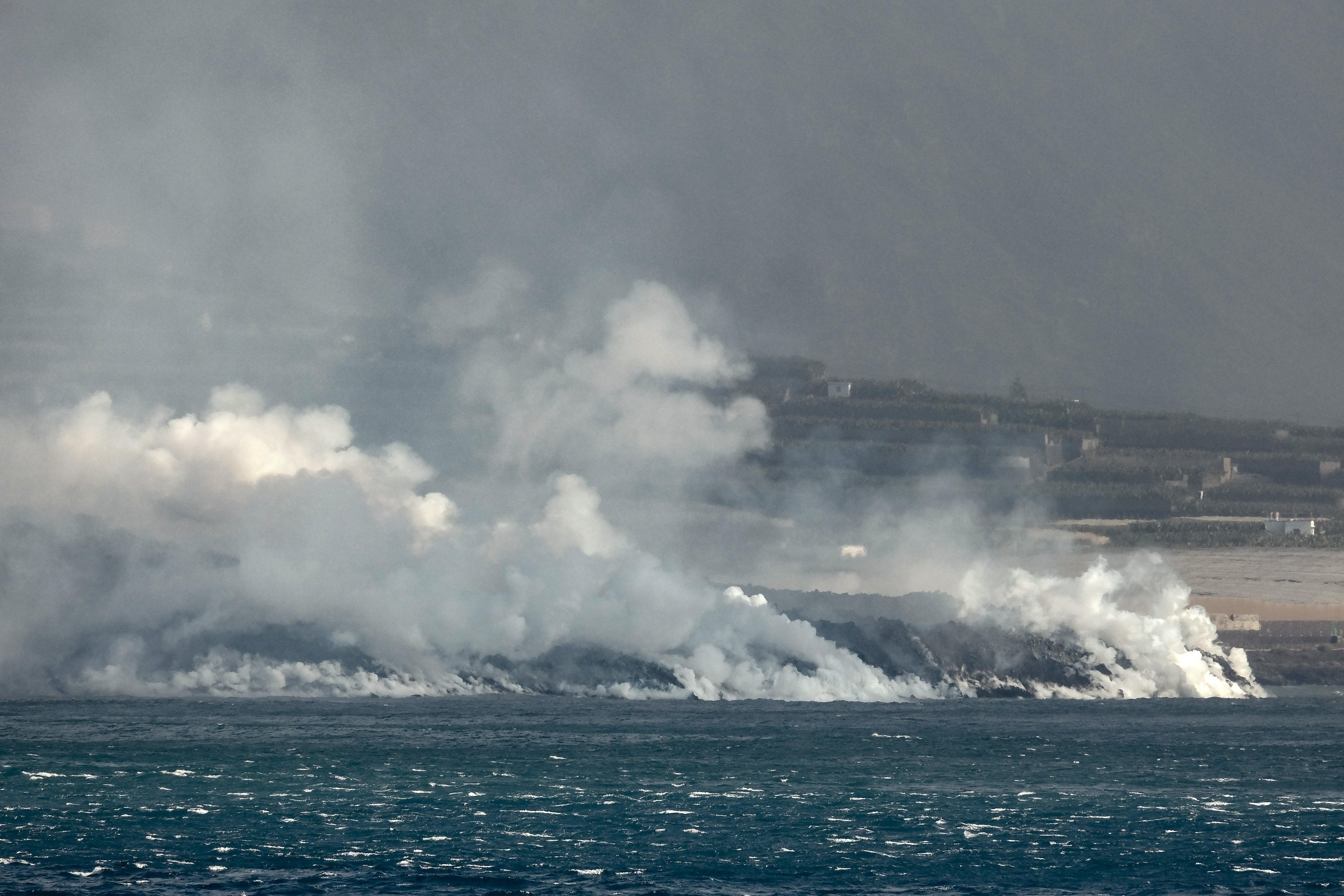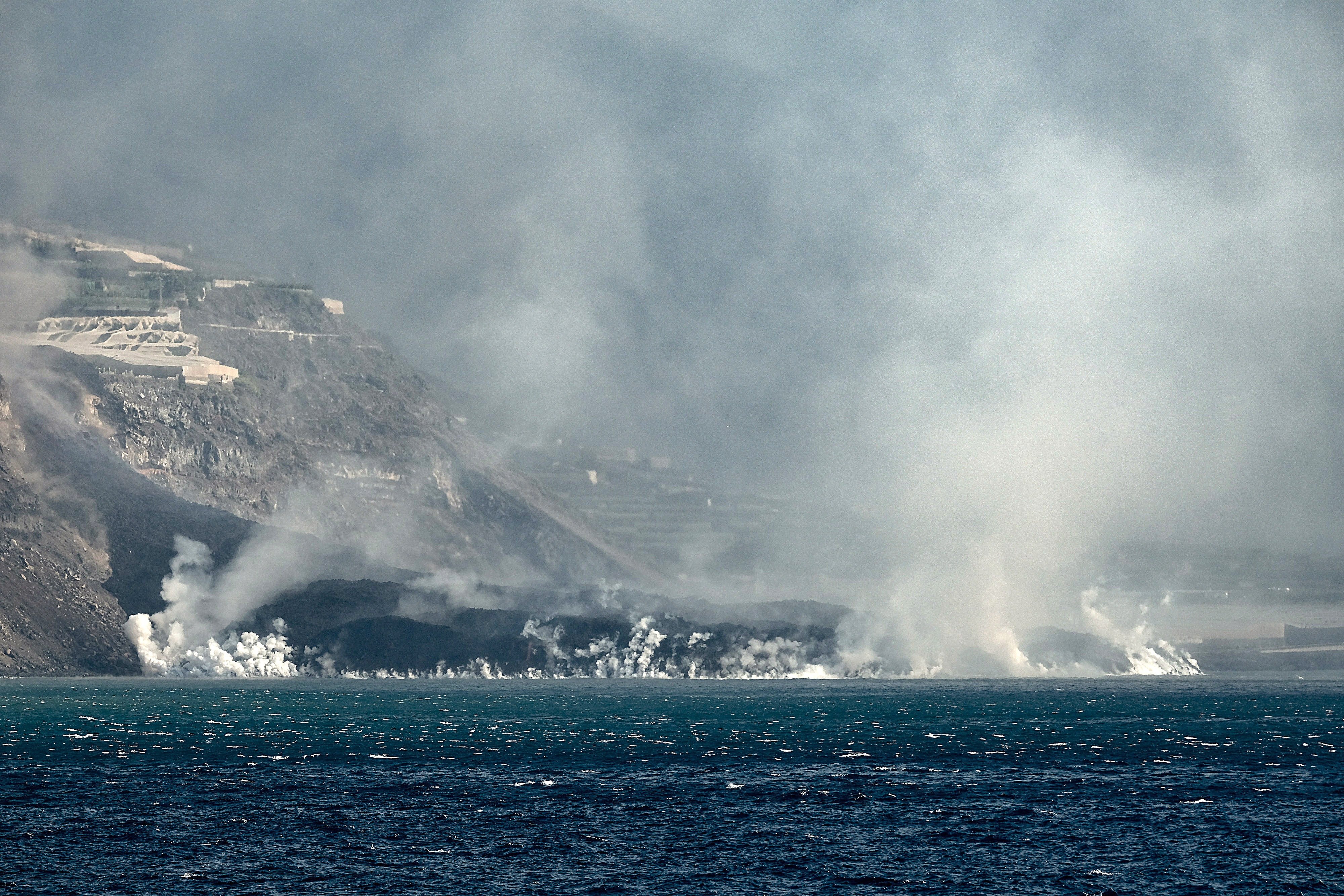The lava flowing from the Cumbre Vieja volcano on Spain's La Palma island, which has been tumbling into the sea since last night, has already created a huge sizzling front of about 500 metres - over a quarter of mile - along which the seawater is gradually being displaced as molten rock from the volcano creates new land. As Eugenio Fraile, from the Spanish Institute of Oceanography (IEO) told the EFE agency, the lava is falling "calmly" into the sea. Fraile is located on the ship Ramón Margalef, observing the new peninsula of lava from further out to sea. He reports that as well as the natural reclamation from the sea that is occurring, there has been a small collapse of the cliffs above the beach of Los Guirres, as the arriving weight of lava generates new pressures.

The front of lava from Cumbre Vieja as it sizzles into the sea / Efe
Fraile, head of the IEO mission on La Palma, explains that it is only when the lava comes into contact with the sea that small clouds of gas are forming. These are carried by the wind, but are dispersed very quickly, according to the scientist. However, authorities recommend staying at least 3.5 kilometres from the affected area. On the other hand, what is still abundant is ash, which has forced the ship to cover its research instruments.
Brown patches in the sea
The scientist explains that there has also been an uneven discolouration of the ocean, with areas of turquoise ocean alternating with others where the sea is brown, especially in the area closest to the lava tongue. Fraile notes that this phenomenon also occurred 10 years ago during the underwater volcanic eruption on another island in the Canary group, El Hierro, when the sea was stained with several different colours until the end of the magma expulsion. According to estimates by the Canary Islands Volcanological Institute, the eruption of the Cumbre Vieja could last between 24 and 84 days.
Before the lava reached the clifftops and began falling into the sea at midnight yesterday, the Margalef team raced to carry out a bathymetry, that is, a depth measurement of the "ocean zero" point, around which the volcanic material is now accumulating.
Monitoreo del primer contacto de la lava con el medio marino. Buque oceanográfico #RamonMargalef @IEOoceanografia @CSIC pic.twitter.com/g3fiKsIA6E
— Eugenio Fraile (@EugenioFraile) September 29, 2021
"Social drama"
Beyond the environmental upheaval, the consequences of the Cumbre Vieja eruption are described by Fraile as a "social drama" for the island of La Palma. On board the Ramón Margalef he says, the scientists and crew feel "desolate." However, they believe that the only way they can help in these circumstances is by "doing science" and trying to extract as many scientific clues as possible to find out how this eruption behaves. According to the expert, the Canary Islands, will "undoubtedly" experience further volcanic eruptions in the future and science can help minimize their effects.
Gases not affecting the population
On a brighter note, the clouds of water vapour and gases, possibly toxic, generated since the lava made contact with the salt water, are for the time being limited to the contact zone between the magma and the ocean, without having produced any kind of effect for the population. Thus, the cloud has not spread laterally and the area of interaction between lava and water "is small", according to María José Blanco, director of the National Geographic Institute in the Canary Islands.
At the moment, the area affected by the eruption is approximately 476 hectares, and according to data from the Copernicus satellite, there are now 744 buildings affected, mostly homes and wine cellars.
In the main image, the front where the La Palma lava meets the ocean / Efe

